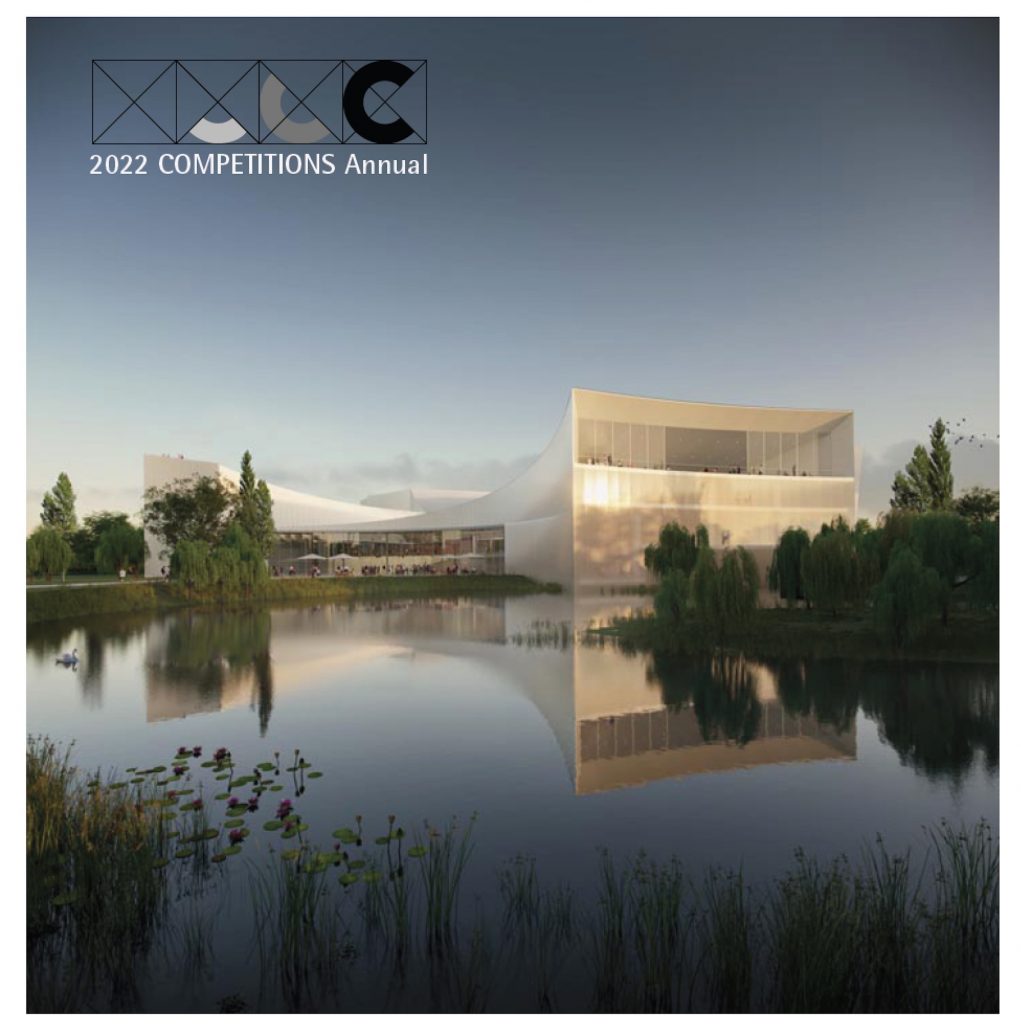Holešovice–Karlín FootbridgeSponsor: The Capital City of Prague
Location: Prague, Czech Republic
Type: Open, international
Language: The competition brief is in both Czech and English, but will be held in Czech only.
Eligibility: Open to all professional teams
Fee: None
Awards:
1st prize 1,000,000 CZK (US $41,161)
2nd prize 600,000 CZK (US $24,696)
3rd prize 350,000 CZK (US $14,406)
Honourable mentions: 50,000 CZK (US $2,058)
Timetable:
25 July 2017 – Registration & submission deadline
Description:
The river is a landscape feature that makes a major contribution to the appearance and character of the city of Prague, while also forming a natural barrier between the two parts of the city lying on opposite banks. Karlín and Holešovice are important city districts that lack good connections between them, especially for pedestrians and cyclists. The new footbridge is intended to create this connection and, from a citywide perspective, to contribute to making the cycle route along the Žižkov–Karlín–Holešovice–Troja axis more compact. The new footbridge will also be important in opening up access to the Štvanice island, making it a major recreational centre. Štvanice can be accessed by cars via the Hlávkův bridge but this route is not ideal for pedestrians and is a long way for residents of Karlín and Holešovice to walk. Both banks are now connected to the island by ferry. The idea of building a footbridge over Štvanice has long been a part of the land use plan. An architectural competition was held in 1999 to de ne the appearance of the footbridge. However, a er the oods in 2002, ood protection measures were reinforced. The reason for holding a new competition is primarily that the technical and legislative requirements have changed and the situation on both riverbanks and Štvanice island have deteriorated due to the lack of a footbridge. The new footbridge would provide convenient and easy access. The most important restrictions on the design are requirements relating to ood protection, water ow and waterway management, the nature of the urban situation on both banks and requirements for wheelchair access to the footbridge. The footbridge will be located near urban heritage sites – Dejvice, Bubny, upper Holešovice and Karlín – and in the Prague Conservation Area. It will impinge on notable vistas along the Vltava river and run through a regional bio- corridor on the Štvanice island. The design of a new footbridge should therefore emphasise respect for the environment and a minimal impact on the landscape. For more information, go to: https://www.tenderarena.cz/profil/zakazka/seznamDokumentu.jsf?id=87879
|
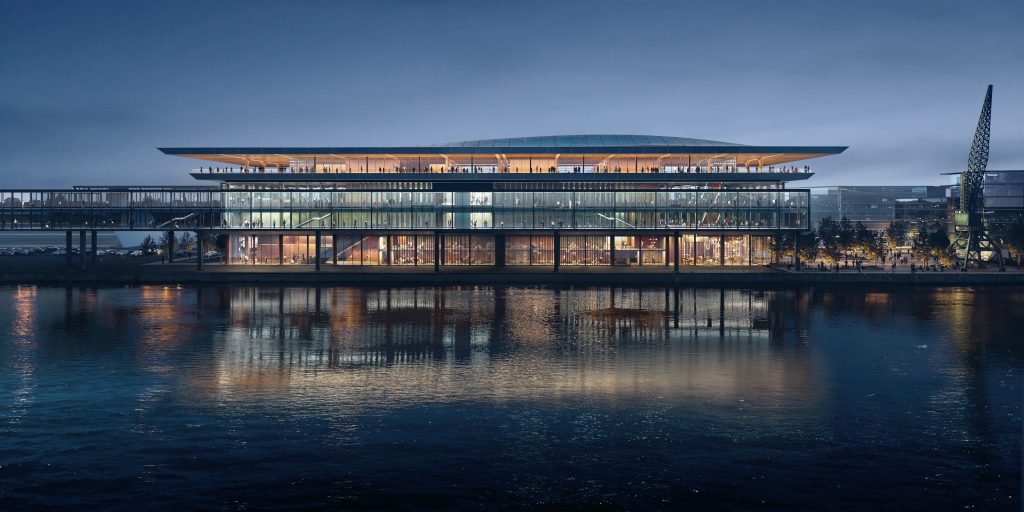
1st Place: Zaha Hadid Architects – night view from river – Render by Negativ
Arriving to board a ferry boat or cruise ship used to be a rather mundane experience. If you had luggage, you might be able to drop it off upon boarding, assuming that the boarding operation was sophisticated enough. In any case, the arrival experience was nothing to look forward to. I recall boarding the SS United States for a trip to Europe in the late 1950s. Arriving at the pier in New York, the only thought any traveler had was to board that ocean liner as soon as possible, find one’s cabin, and start exploring. If you were in New York City and arriving early, a nearby restaurant or cafe would be your best bet while passing time before boarding. Read more… Young Architects in Competitions When Competitions and a New Generation of Ideas Elevate Architectural Quality 
by Jean-Pierre Chupin and G. Stanley Collyer
published by Potential Architecture Books, Montreal, Canada 2020
271 illustrations in color and black & white
Available in PDF and eBook formats
ISBN 9781988962047
Wwhat do the Vietnam Memorial, the St. Louis Arch, and the Sydney Opera House have in common? These world renowned landmarks were all designed by architects under the age of 40, and in each case they were selected through open competitions. At their best, design competitions can provide a singular opportunity for young and unknown architects to make their mark on the built environment and launch productive, fruitful careers. But what happens when design competitions are engineered to favor the established and experienced practitioners from the very outset? This comprehensive new book written by Jean-Pierre Chupin (Canadian Competitions Catalogue) and Stanley Collyer (COMPETITIONS) highlights for the crucial role competitions have played in fostering the careers of young architects, and makes an argument against the trend of invited competitions and RFQs. The authors take an in-depth look at past competitions won by young architects and planners, and survey the state of competitions through the world on a region by region basis. The end result is a compelling argument for an inclusive approach to conducting international design competitions. Download Young Architects in Competitions for free at the following link: https://crc.umontreal.ca/en/publications-libre-acces/ 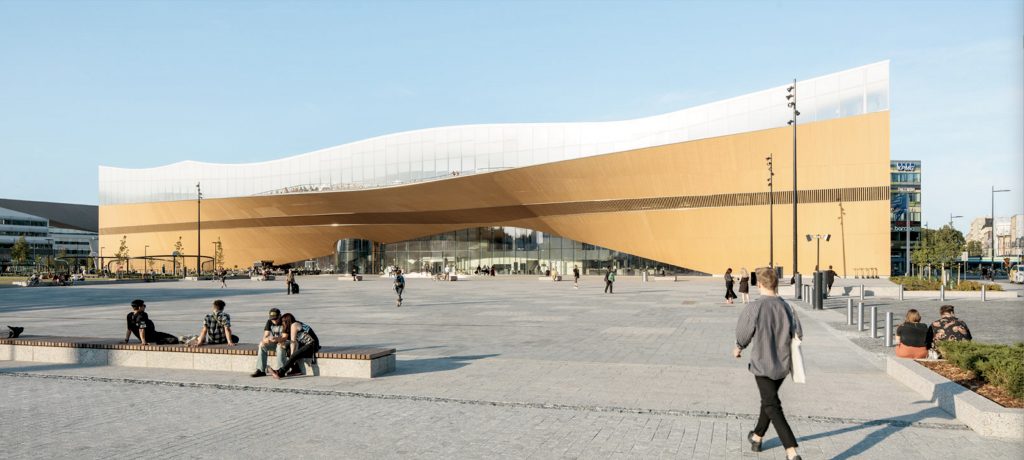
Helsinki Central Library, by ALA Architects (2012-2018)
The world has experienced a limited number of open competitions over the past three decades, but even with diminishing numbers, some stand out among projects in their categories that can’t be ignored for the high quality and degree of creativity they revealed. Included among those are several invited competitions that were extraordinary in their efforts to explore new avenues of institutional and museum design. Some might ask why the Vietnam Memorial is not mentioned here. Only included in our list are competitions that were covered by us, beginning in 1990 with COMPETITIONS magazine to the present day. As for what category a project under construction (Science Island), might belong to or fundraising still in progress (San Jose’s Urban Confluence or the Cold War Memorial competition, Wisconsin), we would classify the former as “built” and wait and see what happens with the latter—keeping our fingers crossed for a positive outcome. Read More… 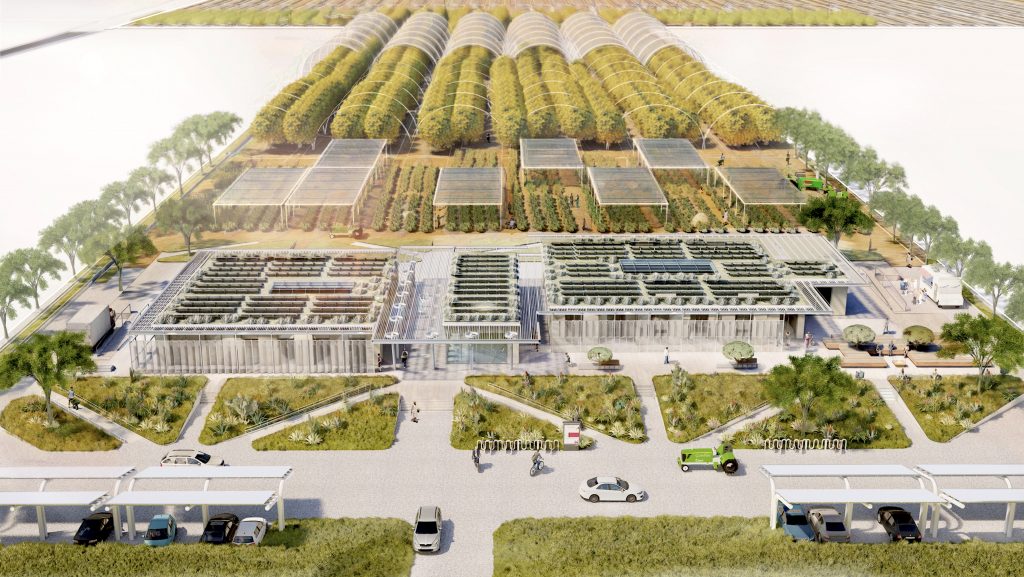
2023 Teaching and Innovation Farm Lab Graduate Student Honor Award by USC (aerial view)
Architecture at Zero competitions, which focus on the theme, Design Competition for Decarbonization, Equity and Resilience in California, have been supported by numerous California utilities such as Southern California Edison, PG&E, SoCAl Gas, etc., who have recognized the need for better climate solutions in that state as well as globally. Until recently, most of these competitions were based on an ideas only format, with few expectations that any of the winning designs would actually be realized. The anticipated realization of the 2022 and 2023 competitions suggests that some clients are taking these ideas seriously enough to go ahead with realization. Read more… 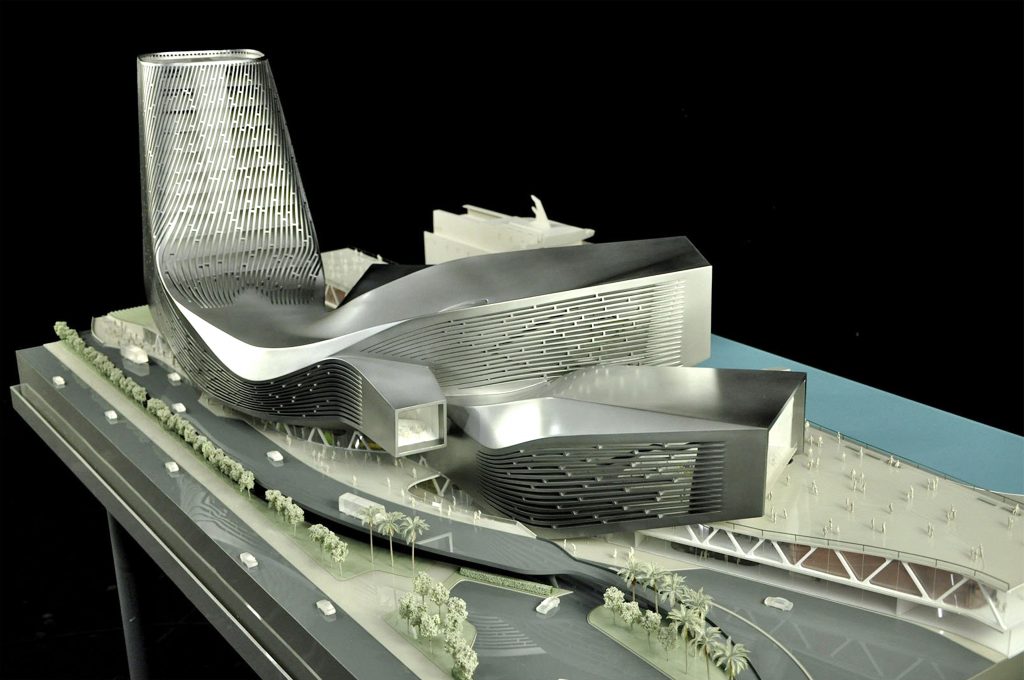
RUR model perspective – ©RUR
New Kaohsiung Port and Cruise Terminal, Taiwan (2011-2020)
Reiser+Umemoto RUR Architecture PC/ Jesse Reiser – U.S.A.
with
Fei & Cheng Associates/Philip T.C. Fei – R.O.C. (Tendener)
This was probably the last international open competition result that was built in Taiwan. A later competition for the Keelung Harbor Service Building Competition, won by Neil Denari of the U.S., the result of a shortlisting procedure, was not built. The fact that the project by RUR was eventually completed—the result of the RUR/Fei & Cheng’s winning entry there—certainly goes back to the collaborative role of those to firms in winning the 2008 Taipei Pop Music Center competition, a collaboration that should not be underestimated in setting the stage for this competition Read more… 
Winning entry ©Herzog de Meuron
In visiting any museum, one might wonder what important works of art are out of view in storage, possibly not considered high profile enough to see the light of day? In Korea, an answer to this question is in the making. It can come as no surprise that museums are running out of storage space. This is not just the case with long established “western” museums, but elsewhere throughout the world as well. In Seoul, South Korea, such an issue has been addressed by planning for a new kind of storage facility, the Seouipul Open Storage Museum. The new institution will house artworks and artifacts of three major museums in Seoul: the Seoul Museum of Modern Art, the Seoul Museum of History, and the Seoul Museum of Craft Art.
Read more… |



























